Propain’s online configurator in review The gateway to a perfect custom build?
With its intuitive layout and countless customisation options, Propain’s online configurator allows you to build your dream bike without getting your hands dirty. However, this much choice also requires some basic know-how: which combinations work, and which one suits your needs best? To find out, we teamed up with the people at Propain and tried out countless configuration options for the new Tyee.

Buying a Propain online is dead easy. However, this doesn’t mean that every model available on their website is the right one for you. If you want to enjoy your new ride to the fullest, you can choose the customise the spec of your dream bike using the German manufacturer’s extensive configurator and get it assembled and sent straight to your front door. Isn’t that awesome?
But how does the Propain configurator work? In a nutshell, it’s like a virtual bike shop, where you choose your frame and desired components, pay for it, and let the store build it for you – only that in this case you can do it from the comfort of your sofa. When configuring your spec, the system updates the price in real time, and also adds the chosen components to the bike in the picture, giving you a pretty good idea of what your new ride looks like. Simply start with the big decisions, then gradually work your way down to the small details… First you pick your frame platform – Hugene, Tyee, Spindrift or Rage – and depending on the model, you can then choose from different travel and wheel size options. Needless to say, you’ll have to decide on the frame size and finish, including the decals and head badge colours. Once that’s done, you’ll be able to choose all the components and contact points.
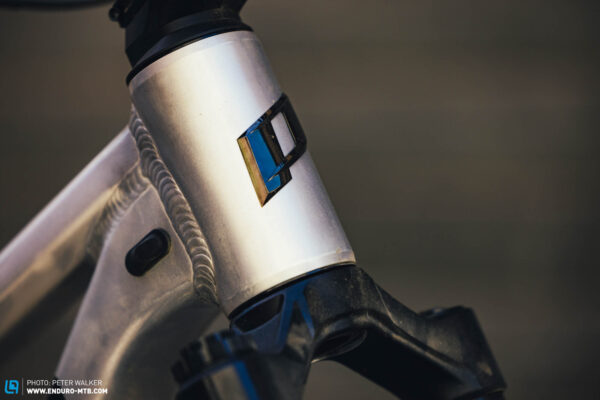

Once you’ve got the basics sorted, you can finally move onto the exciting part: choosing your spec. For novices and the indecisive, Propain offer four pre-configured builds at different price points. If that’s what you’re going for, you’ll just have to decide on a few minor details, like the spring rate, dropper post travel and contact points. The new Propain Tyee, for example, is available in the following pre-configured variants: the Price2Ride, which retails for € 4,199 and comes equipped with exotic Formula suspension, and the SHRED², which sets you back € 5,084 and features a beefy RockShox ZEB fork and tough SRAM components. For € 6,709, you’ll get the Phantom model, which comes equipped with a slimmer RockShox Lyrik fork and matching air shock, as well as a fancy, electronic SRAM Transmission drivetrain. If that’s still not enough to quench your bling cravings, you can get the € 8,244 Gold Rush spec, which features a complete FOX Factory suspension and matching dropper post, all topped off by a carbon wheelset and a top-tier SRAM XX Transmission groupset.

The new Propain Tyee: our guinea pig
For this test, we chose the new Propain Tyee. Even with the pre-configured entry level model, there are countless options to choose from. First off, the Tyee is available both as an alloy and a carbon version, which can be configured with either a 160 mm or 170 mm fork, both of which are paired with 160 mm of travel at the rear. Furthermore, depending on the frame size, you can choose between 27.5″ or 29” wheels, or even a mixed wheel setup. A flip chip allows you to adapt the geometry of the bike to the respective wheel size. In Propain’s portfolio, the Tyee sits right between the German manufacturer’s trail bike, the Hugene, and their freeride rig, the Spindrift.

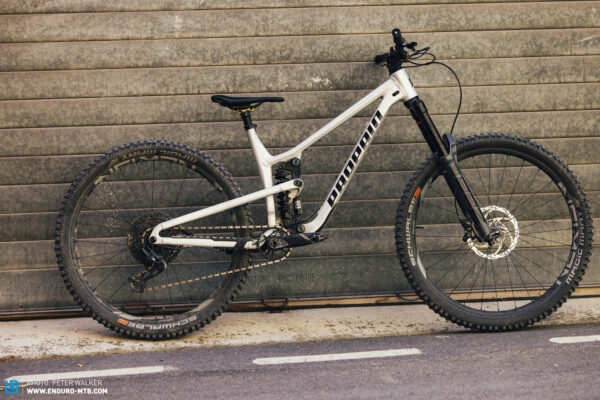
The component options at a glance.
Propain’s extensive configurator is a world on its own, so if you’re planning on building a custom bike but you’re not sure where to start, then this article is exactly what you’re looking for. Here we’ll summarise the most important findings from our test and share our knowledge gained from years of experience with all the individual components. To provide an even more holistic overview, we’ll also include a few personal tips from our editorial team.
Finding the right fork your Propain Tyee
Once you’re happy with the base, the first step is to choose the right fork. As one of the key components of every bike, the fork has a significant influence on the bike’s behaviour on the trail, which is why you should always choose it according to your riding style, body weight and intended use. If you pick a fork randomly, you could end up wrestling a wild bull down the side of the mountain while suffering from nasty arm pump in the process ;) In Propain’s online configurator, there’s a total of six suspension forks to choose from, two 170 mm models, and four with 160 mm travel. The most expensive option is SRAM’s electronic RockShox Flight Attendant suspension fork, but there are three more RockShox forks, and one model from Formula that offers a cheerful alternative, providing impressive trail performance in a more affordable and intuitive package. Alongside RockShox’s top tier suspension, Propain also include a high-spec FOX 36 Factory fork. At the end of the day, skimping on your suspension makes no sense and retrofitting is expensive and complicated.
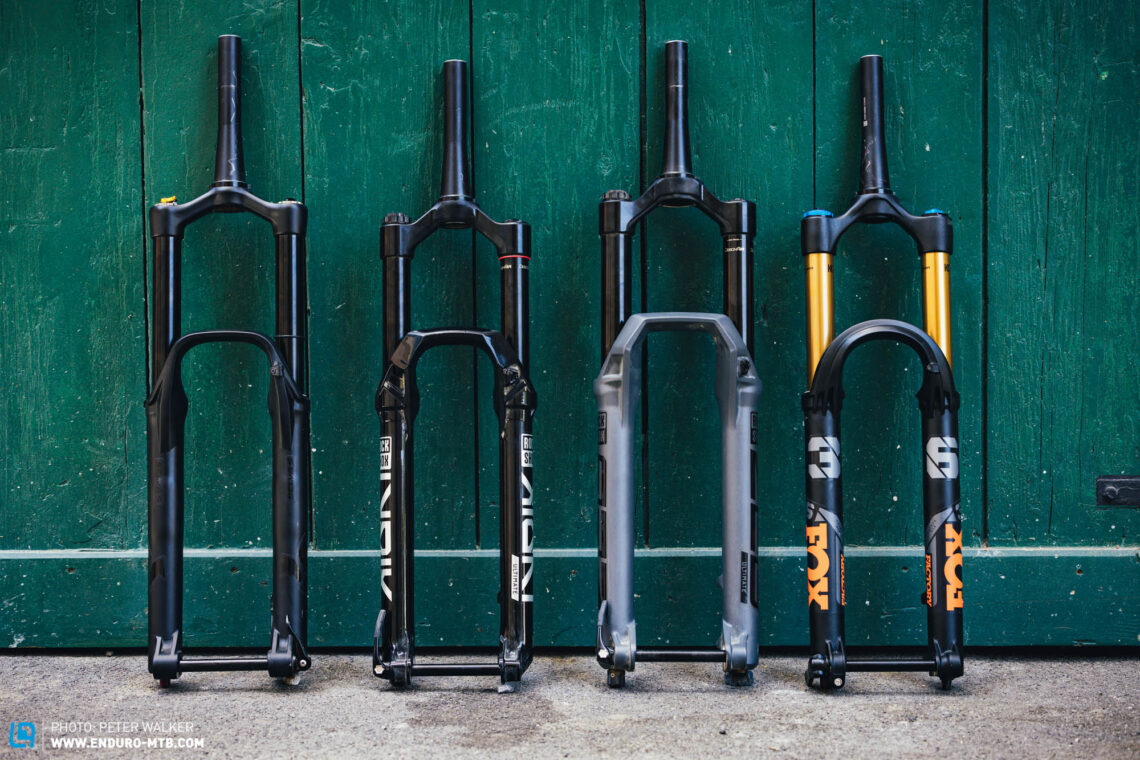
The 160 mm RockShox Lyrik DebonAir+ forks forms part of the standard spec, and can be chosen in the configurator at no extra charge. Offering just externally adjustable rebound and low speed compression settings, it’s rather rudimentary, and in our experience tends to stiffen up with fast consecutive impacts. Don’t do it!
The 170 mm Formula Selva S offers countless adjustment options, including rebound and compression damping as well as different lockout stages. In addition, the CTS damper (Compression Tuning System) offers seven different valves for seven different damping behaviours, and just as many ride feelings – a unique selling point for Formula! Despite being a little outdated, the fork delivers an excellent performance on the trail. With just € 160 surcharge, this is our hot tip for unbeatable price/performance ratio, excellent response, and a wide adjustment range. But be careful, when measuring the sag, remember that the stanchions are longer than the fork’s actual travel.
The latest iteration of the 160 mm RockShox Lyrik Ultimate, which employs the new Charger 3 damper and ButterCups, sets you back an additional € 400. In return, you’ll get externally adjustable low and high-speed compression damping, along with more sensitive small bump compliance thanks to the new ButterCups. With its 35 mm stanchions, it’s also the most sensitive choice for most beginners and light riders, as it’s not as stiff as the beefy RockShox ZEB.
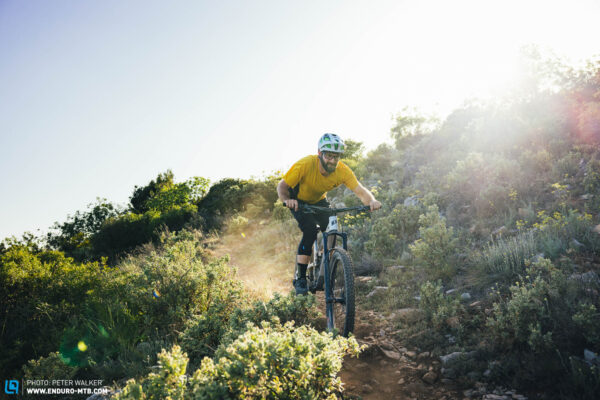
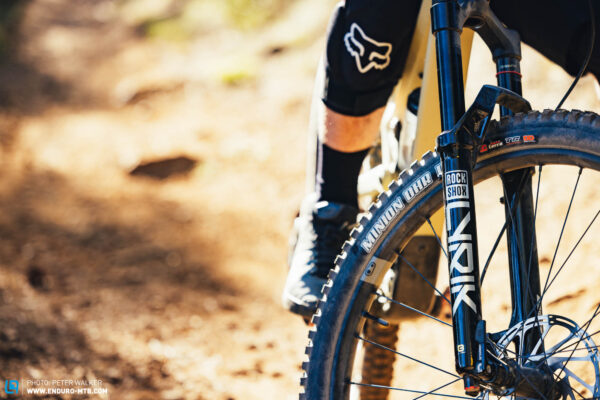
The 170 mm RockShox ZEB Ultimate comes equipped with the latest Charger 3 damper and ButterCups. It comes with a € 425 surcharge and offers externally adjustable low and high-speed compression, and low-speed rebound adjustment. It shares the same internals as the Lyrik Ultimate but has beefier 38 mm stanchions, while the massive fork crown provides a higher degree of stiffness, ensuring more precise handling up front. This option makes sense for heavy and aggressive riders who need (and can handle) the additional high stiffness at the front. At 2,341 g, it’s the heaviest fork in the configurator.
The 160 mm FOX 36 Factory Kashima employs the top-of-the-line FOX GRIP2 damper, which offers high- and low-speed control of both the rebound and compression circuit, allowing for countless adjustment options. On top of that, you’ll get the fancy gold Kashima coating, which was developed to minimise friction. On the trail, it delivers a comparable performance to RockShox’s Ultimate top-tier models, and sits right between the Lyrik and ZEB in terms of stiffness. The 36 Factory Kashima comes with a surcharge of € 515, and is the lightest option at 1,970 grams.
As the name suggests, the 160 mm RockShox Lyrik Ultimate Flight Attendant features the manufacturer’s proprietary, electronic Flight Attendant suspension system, which adds a hefty € 915 to your final bill, and offers externally adjustable low speed compression and rebound damping. The fork’s control unit analyses and deciphers the sensor data and decides which damping setting on the fork and shock (Open, Pedal, Lock) suits the current riding situation best. The system ensures maximum efficiency and is the perfect choice for tech nerds – you can adjust the suspension via an app. In Open mode, the damping performance corresponds roughly to that of a conventional Lyrik Ultimate fork. Note: Flight Attendant only works as a complete ecosystem, so you’ll need to get a matching Flight Attendant shock and crank sensor.
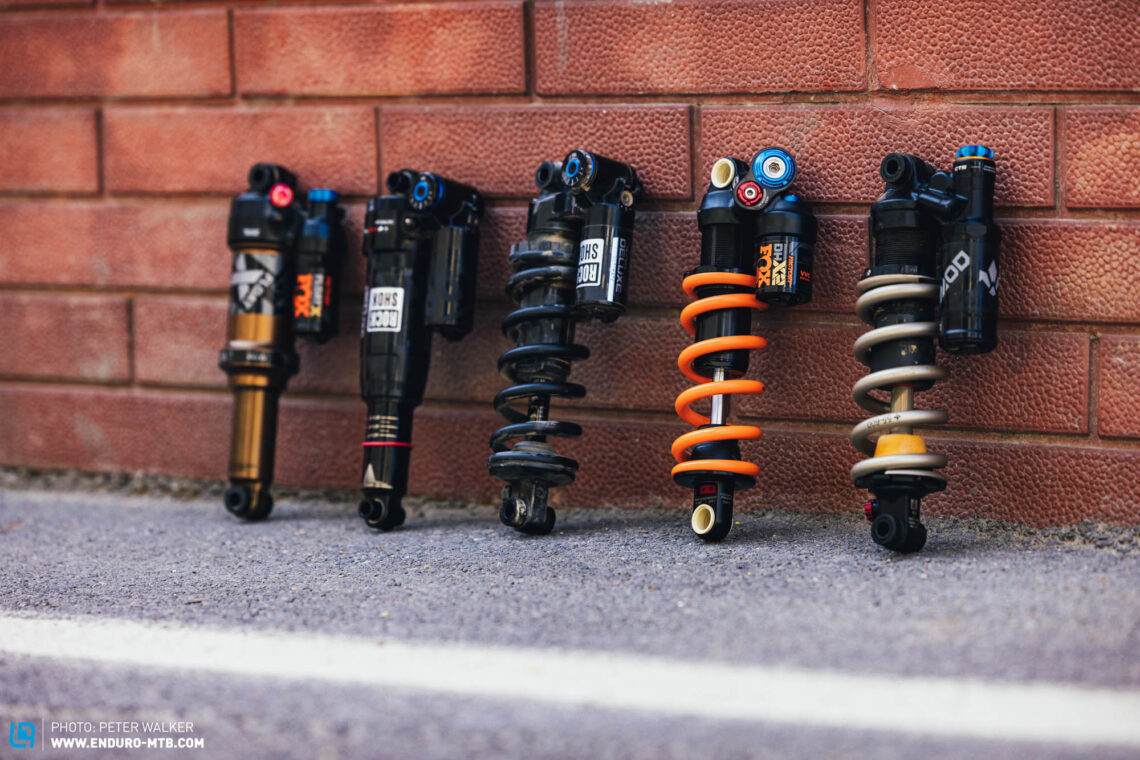
Choosing the right shock for your Propain Tyee
Alongside the fork, the rear shock plays a big part in the bike’s overall performance. While absorbing impacts and generating traction, it needs to ensure that the rear suspension doesn’t swallow up the rider’s input, and instead transfers it efficiently to the trail – keyword support! Propain’s configurator includes seven different shock models, four with an air spring and three with a coil. With the latter option, you can choose your spring rate – awesome! Coil shocks tend to be more supple, sticking the rear wheel to the ground, and proving an excellent match for rough terrain. Remember to set the spring preload before riding. Air shocks usually encourage a more active riding style, providing more feedback and pop. That said, the difference between air and coil isn’t as clear on the new Tyee as with many other bikes. This is mainly due to the fact that the Tyee’s rear suspension is inherently progressive, so all of the air shock variants are delivered with a very soft damper tune.
Make sure you choose your shock wisely and based on your needs, preferences and riding style. Changing a shock afterwards can be a pain, because the tune must be adapted specifically to the bike’s kinematics, which makes it hard or even impossible to find a suitable aftermarket option. By the way, all new Tyee variants generate 160 mm travel at the rear.
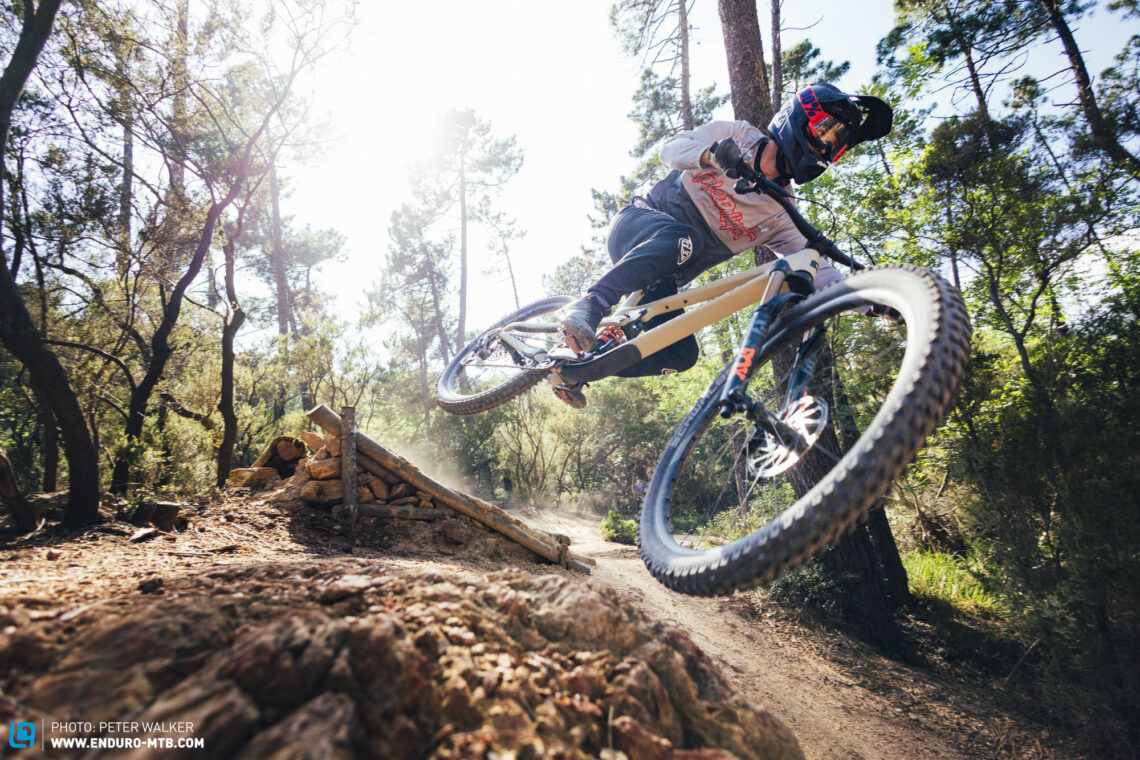
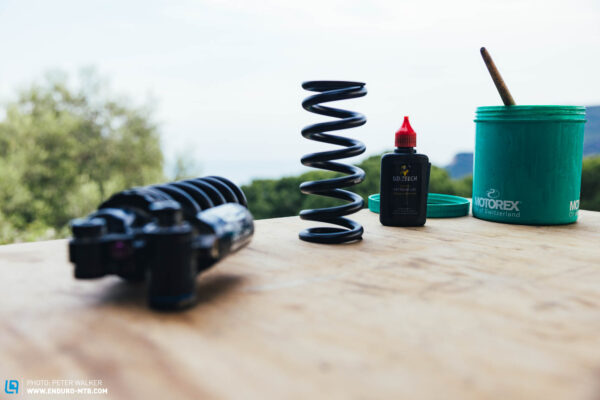

The RockShox Deluxe Select is the most basic entry-level model. It only features externally adjustable rebound damping and forgoes both a piggyback and lockout lever. From experience, shocks without a reservoir tend to heat up quickly due to the smaller amount of oil, which has a negative influence on their responsiveness and overall performance. The budget option might save money but clearly restricts functionality and adjustability. On the other hand, at 300 g, the Deluxe Select is the lightest shock in the configurator.
The Formula MOD coil shock features external compression and rebound adjustments as well as a climb switch. Costing only € 160 more, the MOD is the lightest coil shock in the configurator, tipping the scales at 670 g. Formula’s coil shock offers good small bump compliance and comes with an elegant looking, titanium-coloured spring. Our hot tip for the best price/performance ratio amongst coil shocks.
The RockShox Super Deluxe Coil Ultimate is available at an additional cost of € 300 and is the heaviest shock in the configurator, tipping the scales at 902 g. It features externally adjustable low and high-speed compression as well as rebound damping. A climb switch prevents the rear suspension from bobbing uphill, while the Hydraulic Bottom Out Control increases the compression damping in the last 20% of the stroke, preventing harsh bottom-outs. The excellent small bump compliance and extensive adjustment options make it a great option.
The FOX FLOAT X2 Factory air shock comes with a surcharge of € 325. For your money, you’ll get a fancy Kashima coating and countless adjustment options, including low speed compression and rebound damping. At 420 g, it sits right in the midfield of air shocks in terms of weight. On the trail, it delivers a tremendous performance, providing slightly more support than RockShox’s top tier model. However, over the past few years, we had some issues with several stock X2 shocks, which required lots of servicing and in some cases had mechanical faults.
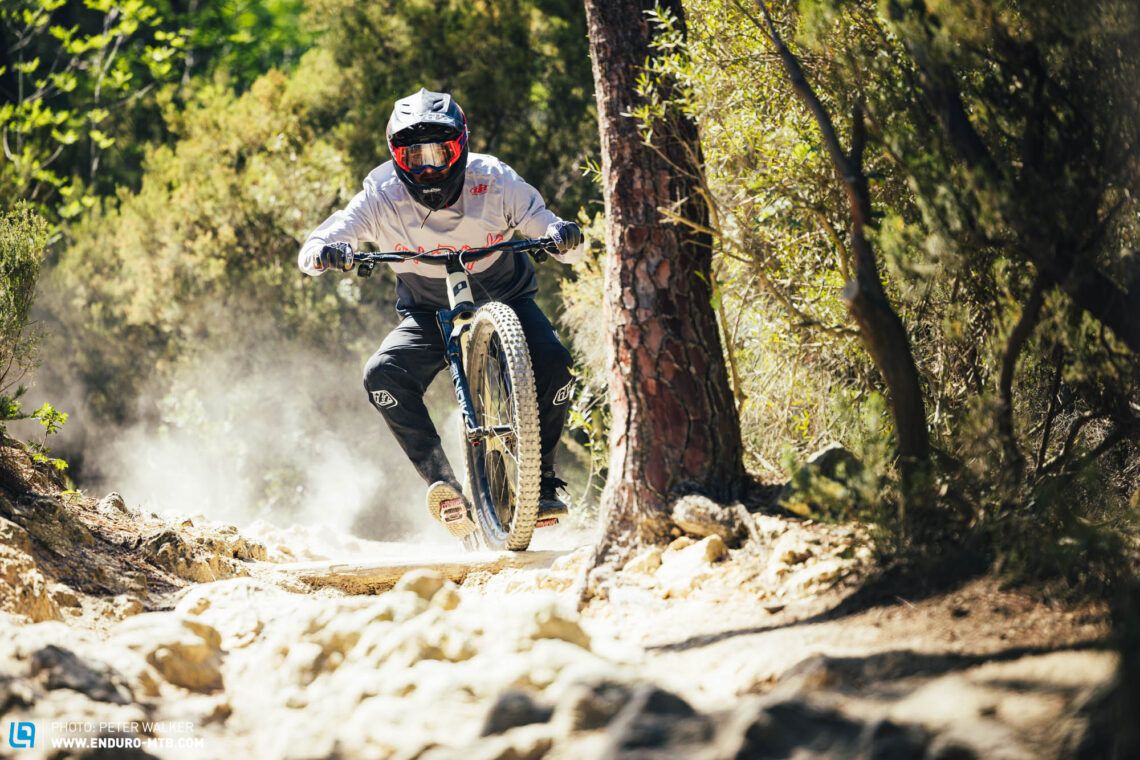
The RockShox Super Deluxe Ultimate air shock features externally adjustable low/high speed compression and rebound damping as well as a climb switch. It comes standard with an integrated SAG indicator, which makes it easier to measure the amount of travel you’re using, facilitating a much quicker initial setup. It sets you back an additional € 350, for which it provides a little more plush ride quality, generating more traction than the other air shocks. On the other hand, it requires more input to negotiate narrow, slow trails.
The FOX DHX2 coil shock comes with a hefty € 625 surcharge and offers externally adjustable low and high-speed compression as well as rebound damping. There’s also a climb switch that prevents the orange spring from bouncing too hard on climbs. It’s our top tip for all suspension nerds who know which knobs to turn to improve their bike’s performance. With the right setup, the FOX DHX2 is the best performing coil shock available with the new Tyee.
Costing an additional € 715, the RockShox Super Deluxe Ultimate Flight Attendant air shock is the shock with the highest surcharge. Like with the Flight Attendant fork, you’ll get electronic suspension with external low speed compression and rebound adjustments. In a nutshell, the system switches automatically between Open, Pedal and Lock mode depending on the riding situation, which makes it the ideal match for tech nerds and riders who require the highest level of efficiency. Like all Flight Attendant components, the air shock can only be purchased as part of the Flight Attendant ecosystem, which includes the fork and crankset. That said, the Propain Tyee is inherently quite efficient uphill, meaning that the electronic suspension is only worth the extra money for ruthless KOM hunters.
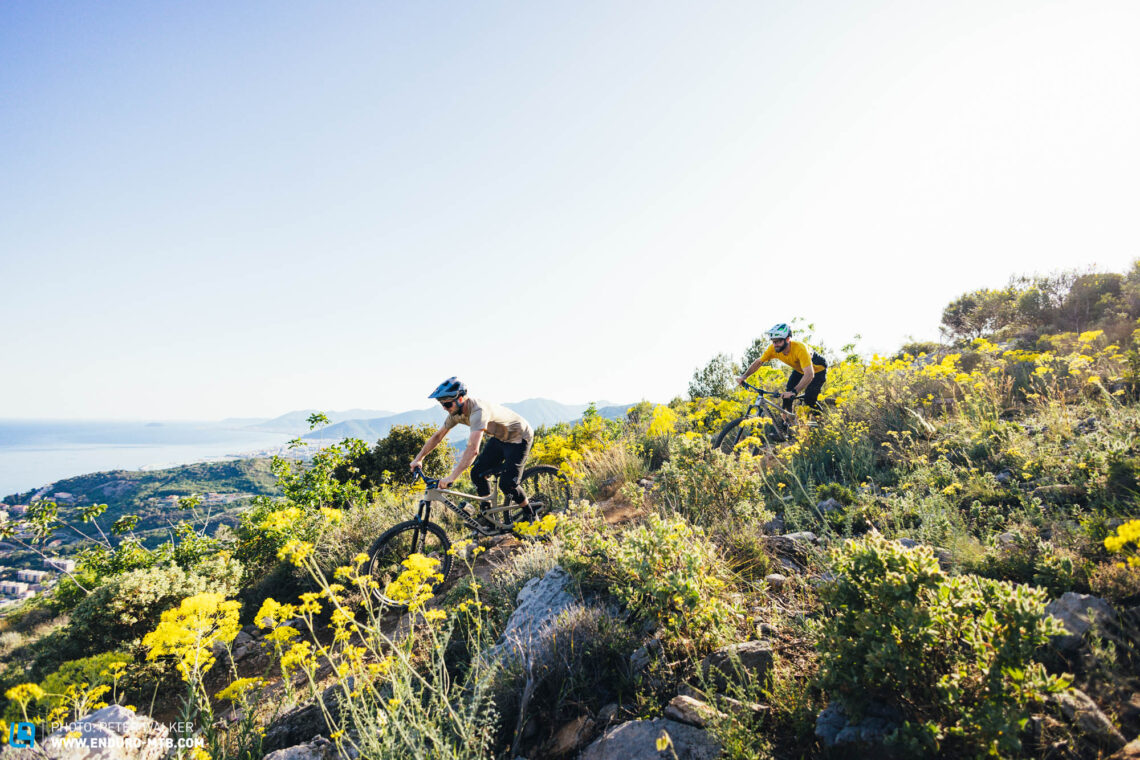
The right drivetrain for the Propain Tyee
When choosing your drivetrain, part of the decision is made for you: it’s SRAM, or SRAM. With that difficult choice out of the way, you can pick from four different SRAM models, all consisting of a crankset, rear derailleur, cassette, shifter and chain. All variants are 1×12 drivetrains with a 520% gear range. There are two cheaper, cable-operated versions and two electronic, wireless variants from SRAM’s brand-new Eagle Transmission model range.
The conventional, cable-operated SRAM GX Eagle drivetrain forms part of the standard configuration and therefore comes at no extra charge. Despite using a mechanical shifter and requiring more maintenance than electronic Transmission drivetrains, it delivers a tremendous shifting performance on the trail, which makes it our top recommendation if you’re on a budget. Moreover, the tough alloy cranks can take a real beating, and the individual components are relatively cheap to replace in case of damage. Our experiences with the GX drivetrain were consistently positive, which is why we recommend it if you’re looking for a more affordable drivetrain that can be upgraded as needed.
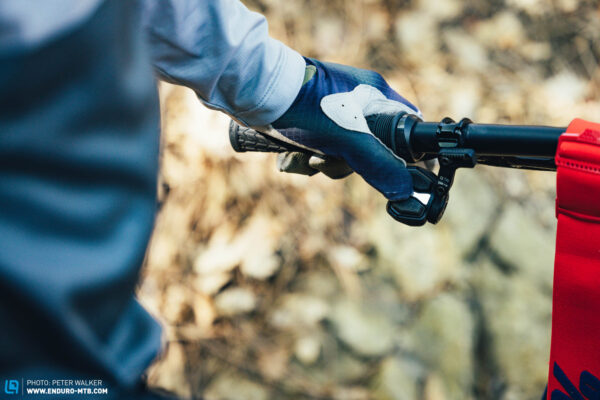
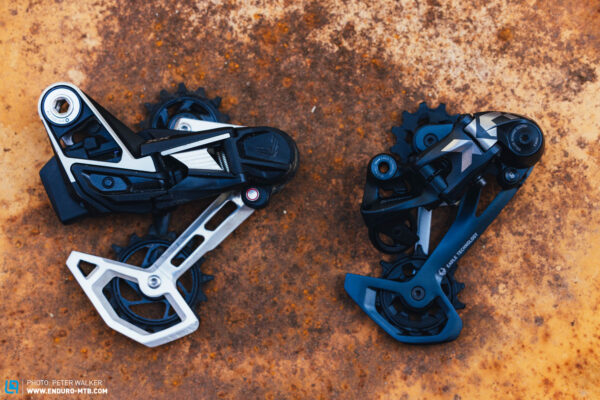
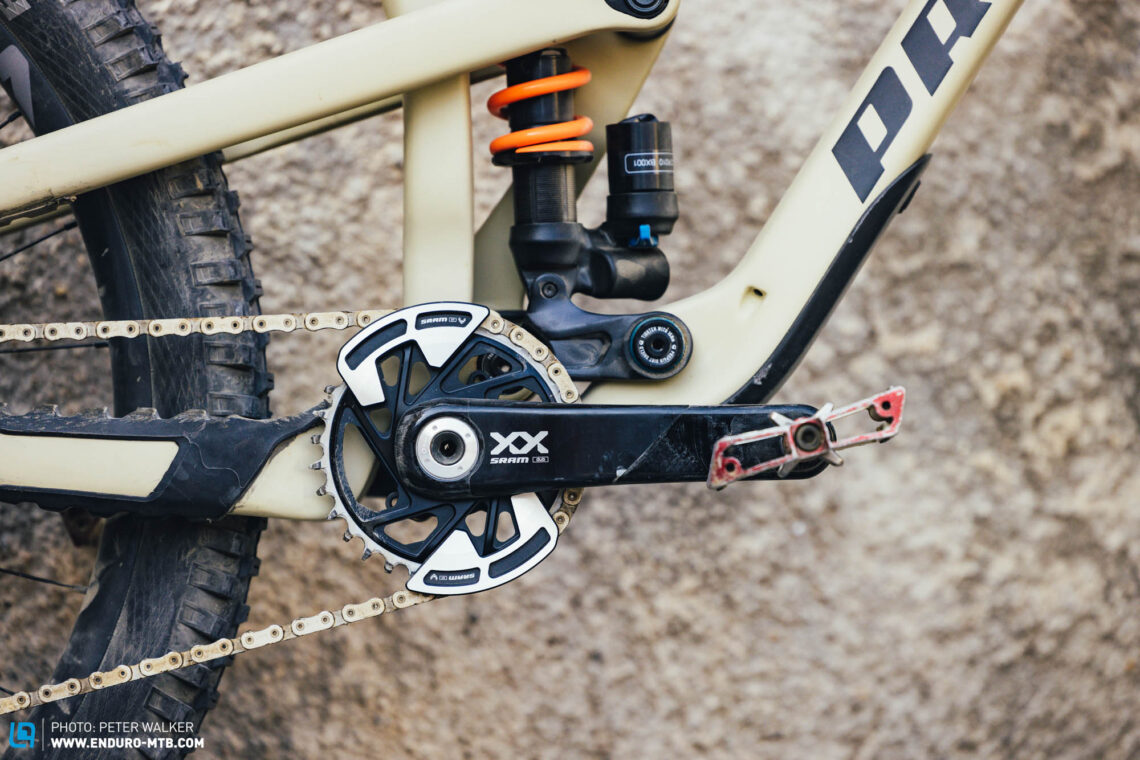
The SRAM X01 Eagle drivetrain also relies on a cable-operated shifter but features a fancy carbon crankset. Shifting performance is excellent too, but the extra bling factor sets you back an additional € 395. Overall, save for a small weight reduction, there isn’t a significant difference in performance over the cheaper GX drivetrain, so we recommend you either save some cash and go with the mid-range GX drivetrain, or go proper bling with the electronic Transmission groupset.
The SRAM X0 Eagle Transmission is the least expensive version of SRAM’s brand-new direct mount drivetrains. The rear derailleur forgoes a mech hanger and instead mounts directly to the rear thru-axle. The drivetrain is easy to adjust, and the alloy crankset has an integrated bash guard. Transmission allows shifting under load and always shifts gears smoothly, although you have to pay an € 895 surcharge for the privilege.
At € 1,695, the SRAM XX Eagle Transmission is the most expensive upgrade you can get on Propain’s configurator. The cranks are made of lightweight carbon and come standard with a bash guard. Shifting performance is just as smooth and reliable as with the cheaper X0 variant. Despite the huge price difference, performance gain is marginal, so we recommend going for the more affordable X0 Transmission rear derailleur instead unless you’re a real weight weenie.
The right handlebars for the Propain Tyee
Keeping things simple, there are two different SIXPACK MILLENIUM alloy handlebars to choose from – carbon isn’t an option yet, but we’re totally fine with that. The two available options are almost identical except for the rise, combining 805 mm width and 330 g weight, paired with either 20 mm or 30 mm rise. It’s up to you to decide which variant suits your riding style and intended use best.
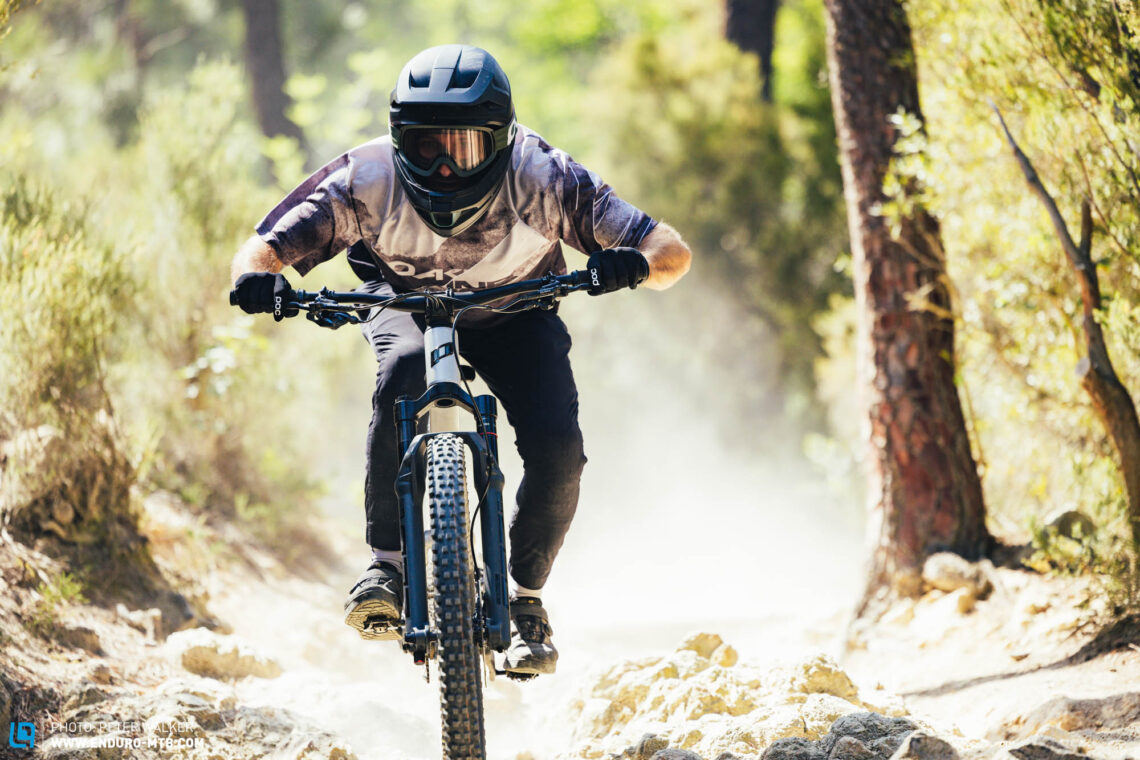

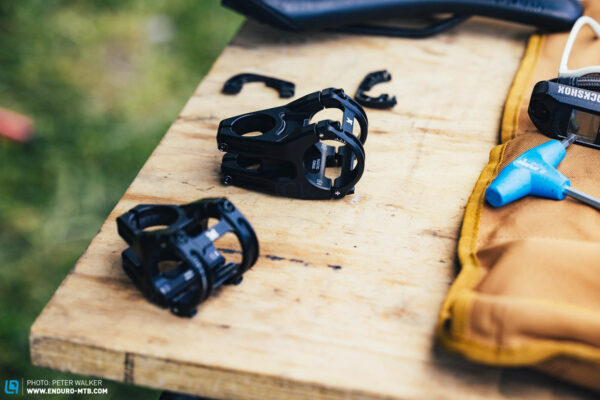
The right stem for the Propain Tyee
Propain give you the choice of 3 stems from German component manufacturer SIXPACK. The main differences between the three models are the lengths and type of cable routing. In this test, we tried both the 50 mm and 35 mm variants, but all test riders ended up favouring the shorter 35 mm version over the longer one, as it provides more direct handling.
As part of the standard configuration, the 50 mm SIXPACK Vertic cast alloy stem is available without surcharge. This stem works well with the alloy frame, as the cables pass around the head tube into ports in the down tube. However, the carbon frame has headset cable routing. The lack of cable management provided by the Vertic stem leads to a rather messy front end, as the cables emerge directly from the headset with nothing to guide them.
The SIXPACK MILLENIUM ICR is made of CNC Machined aluminium, and costs an additional € 70. For the extra cash, the cables disappear into a rubber adapter under the handlebars, then run straight through the spacers directly into the headset. The stem is available both as a 50 mm and 35 mm version. The internal cable routing ensures a tidy cockpit. In this issue, you’ll also find a separate, in-depth review of the SIXPACK MILLENIUM ICR, in which we’ll tell you all its pros and cons.
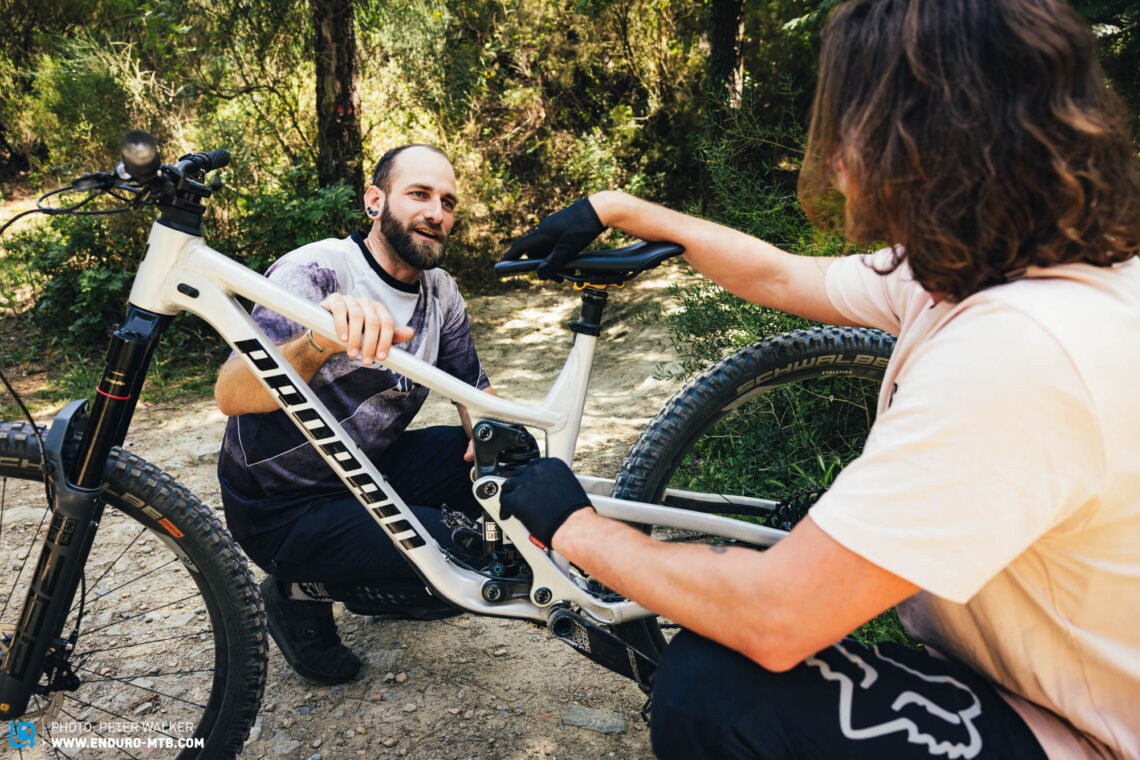
The right seatpost for the Propain Tyee
Propain offer a choice of five different seatposts, from rigid posts to cabled-operated droppers, and even SRAM’s wireless electronic AXS dropper post. While some models come with up to € 595 surcharge, other options don’t have any additional cost – awesome! When choosing the travel, make sure the dropper can be inserted all the way into the frame, as this will ensure optimal freedom of movement on the bike. You’ll find this kind of information in the “technical data” section of each bike.
The Aluminium 350 mm is a rigid seat post. At 290 g, it’s the lightest option available in the configurator and, as the name suggests, it’s 350 mm long. Rigid seat posts are totally maintenance-free and a great, very affordable option if you’re planning to use your Tyee exclusively for epic bike park sessions with uplift and don’t want to climb a single metre under your own steam – or if you already have a dropper post lying around your bike cave. If neither of these scenarios apply to you, forget about it!
The BikeYoke DIVINE sets you back an additional € 230 and is available in three lengths, with 125, 160 and 185 mm of travel, respectively. The DIVINE works smoothly and reliably, and according to BikeYoke, it bleeds itself every time you drop it all the way down. As a result, it should never get spongy or get jammed in the last part of the travel.
The BikeYoke REVIVE dropper has a € 275 surcharge and is available in four versions with 125, 160, 185 and 213 mm of travel, respectively, allowing you to get your saddle out of the way when you really need to. Like the DIVINE, the REVIVE features a bleeding valve under the seat clamp that lets you quickly refresh the post should it become spongy. With up to 213 mm of travel, it’s the longest dropper post option available in the configurator, which makes it the optimal choice for long-legged riders who favour practicality over bling. Our top price/performance tip.
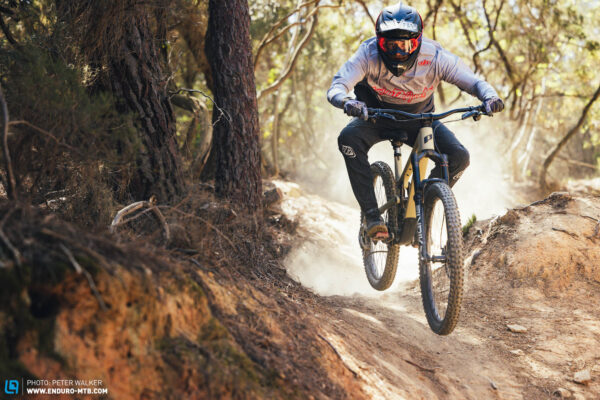
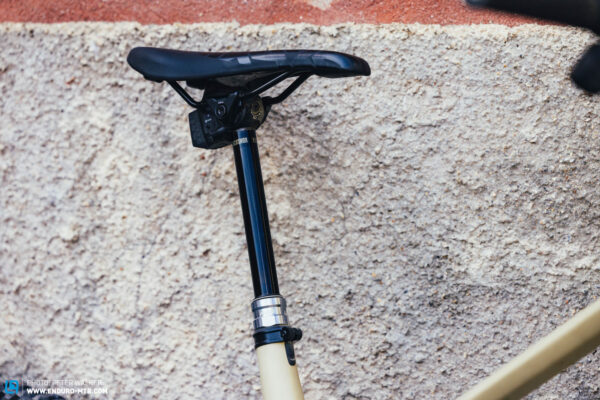
The FOX Transfer Kashima dropper costs an additional € 315 and is available in four lengths, with 125-, 150-, 175- and 200-mm of travel. The fancy Kashima coating matches the Factory suspension perfectly and is meant to reduce friction. That said, our FOX Transfer Kashima dropper got stuck several times during this test and took some convincing to fully extend. We would recommend picking one of the cheaper BikeYoke droppers, or go full bling with the AXS dropper if money isn’t an issue.
With a surcharge of € 595, the RockShox Reverb AXS is the most expensive dropper post available in the configurator. It’s available in three different versions with 125, 150 and 170 mm of travel. The biggest advantage is that it’s wireless, ensuring a much tidier cockpit. Moreover, it doesn’t require you to install (and replace) an additional Bowden cable, and has by far the fastest action, allowing you to drop and lift the saddle quickly and with minimal effort. On the other hand, you’ll have to remember to charge the small AXS battery from time to time – albeit the charge holds for a very long time. Needless to say, the RockShox Reverb AXS is the ideal choice for all SRAM AXS devotees and tech nerds who like a tidy cockpit.
The right saddle for the Propain Tyee
Propain’s configurator includes two saddle options: the SIXPACK KAMIKAZE, which is available at no extra charge, and the SQlab 6OX Infinergy ERGOWAVE, which costs an additional € 120 and comes in 4 different sizes with different widths. Before picking yours, you should measure the distance between your sit bones and visit the SQ labs website to check which saddle width suits your anatomy best. Given that the shape and comfort of a saddle is largely down to personal preferences, we’re not going to give you any recommendations here. ;)

The right brakes for the Propain Tyee
When it comes to brakes, Propain offer seven different models from three different manufacturers: SRAM, Formula and MAGURA. All seven rely on a four-piston calliper and are paired with 200 (or 203) mm rotors. Although all of the models we tested generate a similar braking torque, there are big differences in terms of modulation, adjustability and ergonomics depending on the model you choose.
The SRAM DB8 comes standard with the basic pre-configured Tyee model at no extra cost. It’s relatively heavy and also looks rather bulky. To adjust the lever reach, you’ll need a multitool, or ideally an Allen key with a ball head. While on the trail it delivers a pretty decent braking performance, it can’t keep up with its top-tier competitors.
Formula’s Cura 4 stoppers only cost € 50 more than the standard option and are the lightest brakes in Propain’s configurator. The slim, organic silhouette ensures an elegant, understated look. On the trail, the brakes provide reliable and powerful deceleration with a crisp bite point. While the current version still requires an Allen key to adjust the lever reach, the upcoming revised model will have a more intuitive reach-adjust dial. Once it’s available on the market, the latest Cura 4 iteration will replace the existing one in Propain’s configurator. Given the excellent specs, outstanding braking performance and small surcharge, the Formula Cura 4 brakes are our top price/performance tip.
The MAGURA MT5 shares the same € 50 surcharge, but forgoes tool-free bite point and lever reach adjustments. On the trail, the brake delivers a similar performance as its more expensive MT7 counterpart, albeit with a less refined lever feel – which is perfectly acceptable in this price segment.
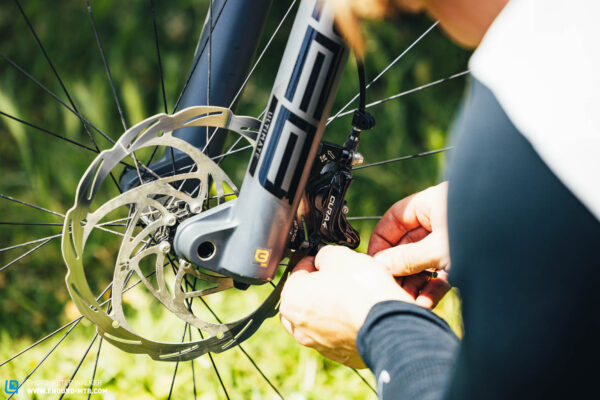
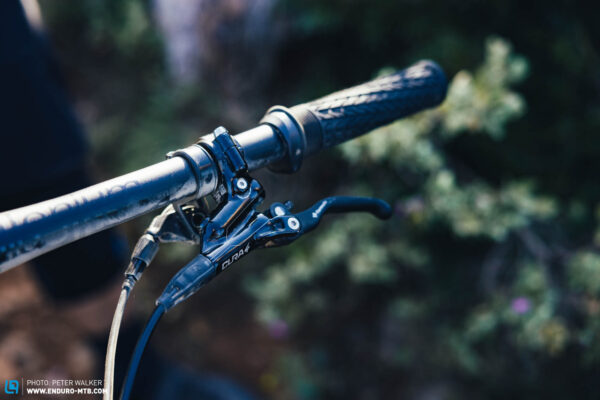
The SRAM CODE R brakes set you back an additional € 90. The R suffix stands for Reach Adjust, meaning that it features a tool-free lever reach adjust. On the other hand, the R model forgoes SRAM’s SwingLink technology, which was designed to reduce the amount of force required for braking, effectively reducing the likelihood of arm pump. We would rather pick the superior RSC model, or the Formula brakes.
The MAGURA MT7 brakes cost an additional € 200 and feature tool-free bite point and lever reach adjustments. On the trail, they pack a punch, but at the same time provide excellent modulation, which makes them suitable for heavy riders and long descents. Furthermore, the MAGURA MT7 allow you to customise both the calliper rings and brake lever covers, adding a splash of colour.
The SRAM CODE RSC costs an additional € 230 and is the flagship model in SRAM’s gravity portfolio. The RSC lever employs tool-free bite point and reach adjustments as well as their proprietary SwingLink technology, which is designed to minimise deadband and optimise modulation, thus reducing arm pump. On the trail, the SRAM CODE RSC provides reliable deceleration and good modulation, packing a punch even on long descents. That said, the bite point is less defined than with the Formula or MAGURA brakes, although this isn’t necessarily a disadvantage.
The MAGURA MT7 Performance has a surcharge of € 260, making it the most expensive brake option in the configurator. It shares the same key features as the MT7 but comes with a thicker, 2.25 mm MDR-P floating rotor, which reduces unpleasant brake drag vibrations. That said, the thicker rotor also means less pad clearance and a shorter dead band space, which translates into a more direct bite point.
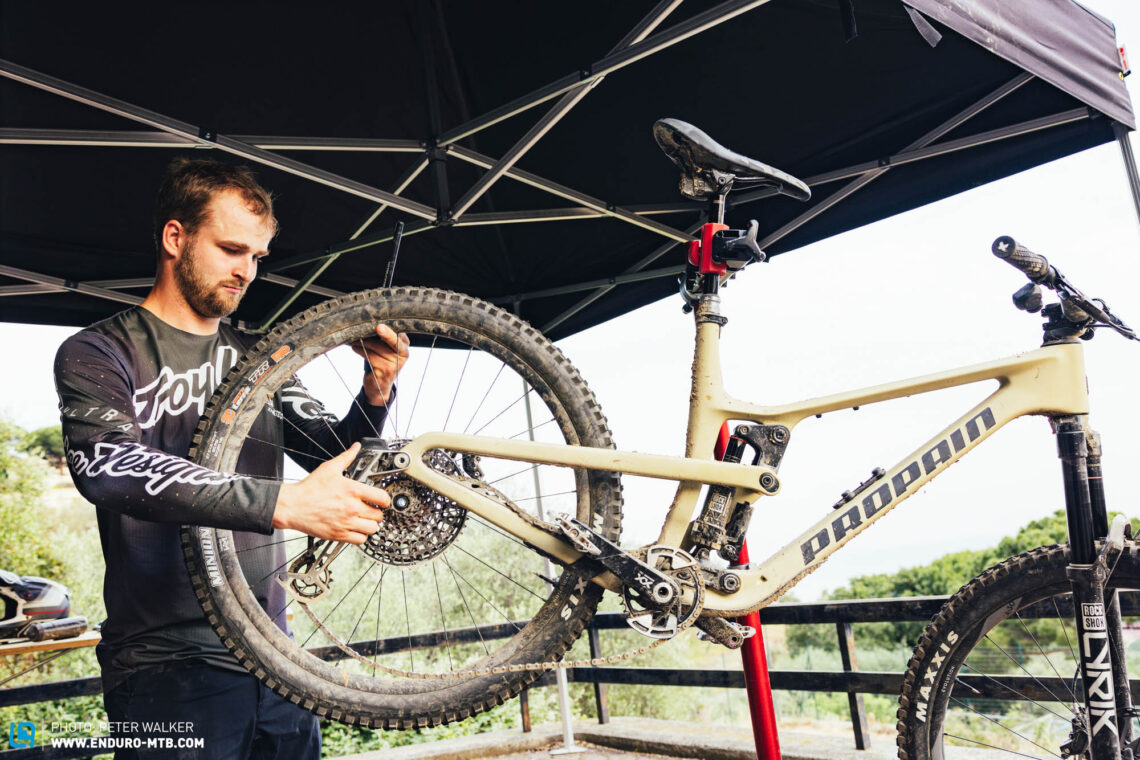
The right wheelset for the Propain Tyee
Propain offer a choice of three alloy and two carbon wheelsets in their online configurator. German manufacturer NEWMEN supplies four of them, while Crankbrothers provide one. Although carbon wheels save weight, while at the same time ensuring more agile handling due to the lower rotating mass, you should weigh up the pros and cons of each material before choosing your wheels. With carbon, the tire combination is crucial, because punctures and impacts could potentially result in costly rim damage. Moreover, you’ll do yourself a favour by picking a high-quality wheelset, because it’s more reliable in the long run, offering clear advantages in terms of durability. While it might not be easy to feel a significant difference when riding, you’ll definitely notice the difference in lifespan – cheaper wheels tend to have softer rims, making them more susceptible to impacts, dents and loose spokes. Truing your wheels after every ride is a pain in the butt and requires either excellent mechanical skills or a deep wallet.
The NEWMEN PERFORMANCE 30 is the brand’s entry-level wheelset, and comes standard with the basic pre-configured model. Tipping the scales at 1,995 g, it’s supplied exclusively as an OEM component for bike manufacturers in this configuration, meaning that it can’t be retrofitted. What’s really cool, however, is that it employs the same hub technology as its top-tier counterpart. During our test laps, however, it lacked feedback and the spokes loosened up far too easily, forcing us to true the wheel after just a few laps.
The NEWMEN EVOLUTION E.G. 30 has an additional cost of € 250 and relies on the same high-quality hub as the Performance 30. The rim borrows the cross-section from NEWMEN’s top-tier alloy rim, the SL A 30, but is made of lower-strength 6061 aluminium. In addition, the rims have a sleeved joint,and the workmanship isn’t as high quality as with NEWMEN’s high-end wheels. While this doesn’t have a huge influence on the bike’s handling, it has an effect on the wheel’s durability.


The NEWMEN EVOLUTION SL A 30 wheelset costs € 450 extra and is the lightest alloy wheelset in the configurator, tipping the scales at 1,720 grams. It’s our top wheel tip, offering an excellent price/performance ratio and great durability. On the trail, it delivers an outstanding performance, as we’ve already discovered from past experiences. If you’re after an all-round carefree package, this is your optimal choice – but remember, nothing lasts forever! By the way, the EVOLUTION SL A 30 relies on sleeved rims made of a more robust 6069 aluminium.
The NEWMEN ADVANCED SL A 30 is the German manufacturer’s all-round carbon wheelset (from trail to DH) and, at 1,610 g, also the lightest option available in the configurator. It has a surcharge of € 845 and delivers the most precise and direct handling on the trail. However, this requires good handling skills and a vigilant riding style, because the direct feedback can be overwhelming for inexperienced riders.
The Crankbrothers Synthesis Enduro Carbon i9 comes with a hefty €1,345 supplement that makes it the most expensive wheelset in the configurator. The Crankbrothers carbon rims are paired with Industry Nine Hydra hubs, which are known for their distinctive freewheel buzz and mind-boggling 690 points of engagement. While at 1,792 grams, they aren’t the lightest wheels in the configurator, they’re designed to address the demands of high performance mountain biking. The wider front wheel is designed with more vertical compliance built into the rim than the rear, and they tuned more flex into the build by using 28 spokes and less spoke tension. This makes it feel more like a lightweight aluminium wheel but without the vague handling characteristics that you get with that type of wheel, offering more support when pumping through berms and harsh compressions. As a result, the Crankbrothers Synthesis Enduro Carbon i9 is a great option for aggressive riders with a healthy bank account.
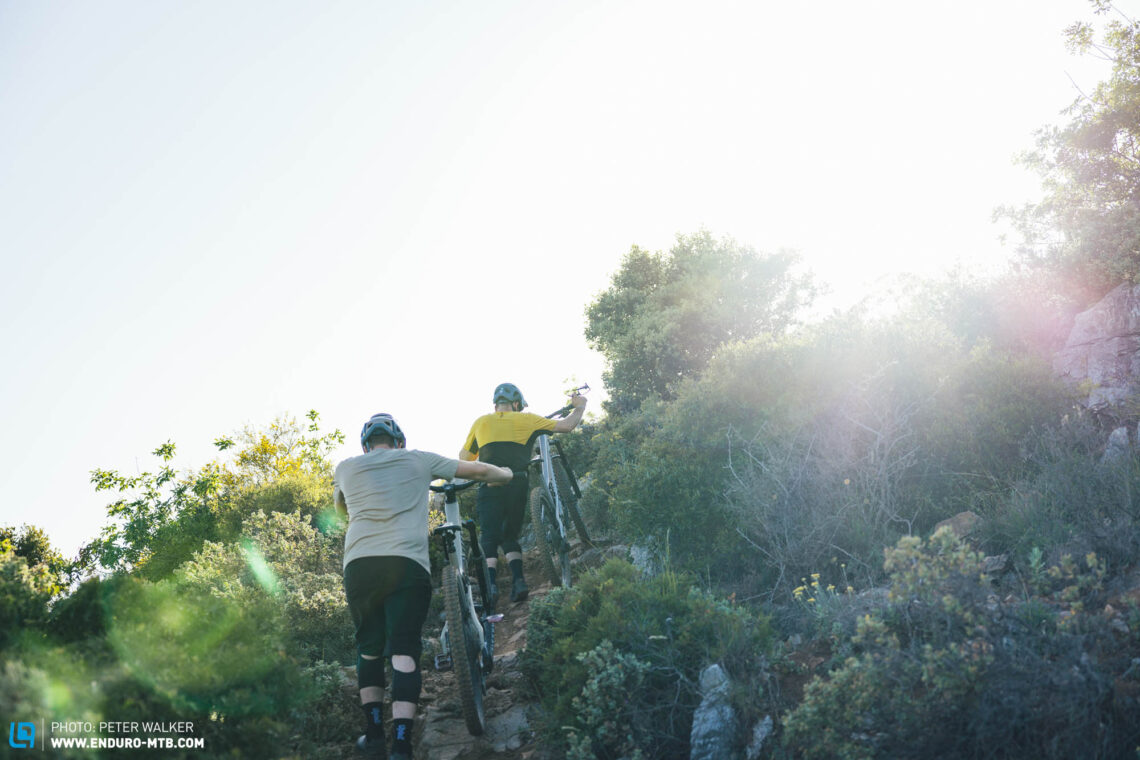
The right tires for the Propain Tyee
For the tires, Propain offer a total of three options, with two models from Schwalbe and one from MAXXIS, all of which can be freely configured without surcharge.
The first options consist of a 2.4” Schwalbe Magic Mary dyad. While this is an excellent combo per se, both tires come in the puncture-prone Super Trail casing, which doesn’t do justice to the Tyee’s character and intended use. If you weigh more than 60 kg or if you’re planning on pushing yourself beyond moderate home trails and gravel paths, we recommend choosing more robust tires with a tougher casing.
The Schwalbe Magic Mary/Big Betty combo employs Schwalbe’s rear-specific Big Betty tire, which, at 1,085 grams, is marginally lighter than the Magic Mary. Unfortunately, this option relies on the thin Super Trail casing too.
The MAXXIS ASSEGAI/Minion DHR II tire combo is the most sensible option in Propain’s configurator, and the only one that does justice to the Tyee’s potential and intended use. The 2.5″ ASSEGAI front tire comes in the soft MaxxGrip rubber compound and EXO+ casing, while the 2.4″ Minion DHR II rear tire employs the harder MaxxTerra compound and robust DoubleDown casing. This setup is very popular amongst enduro riders, as it ensures plenty of traction at the front and excellent puncture protection at the rear – our clear recommendation!
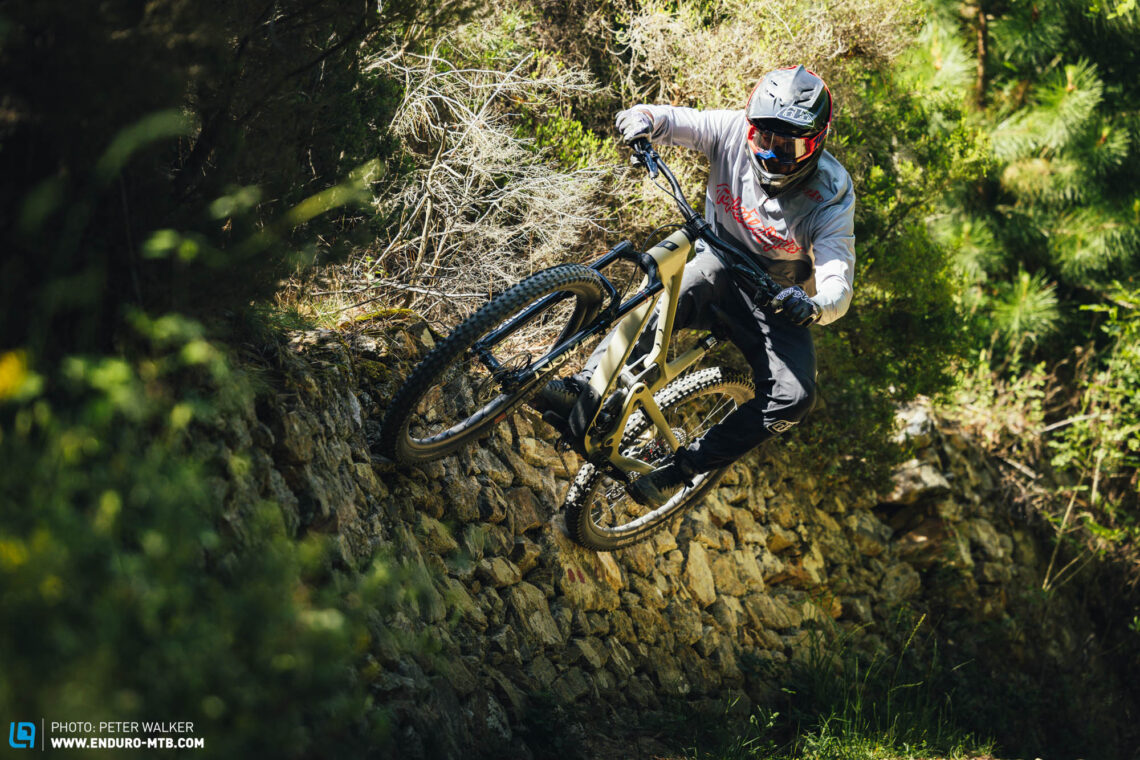
Which tire option should I choose for my new Propain Tyee?
Although the Tyee is delivered with inner tubes at no extra charge, we strongly recommend spending the extra € 50 for the MilKit tubeless upgrade. This includes everything you need for a tubeless conversion, including the valves, sealant and even a syringe. A tubeless setup offers countless advantages on the trail and has long become standard in mountain biking. Read our in-depth tubeless guide to find out everything about this topic.
Do I need a chain guide or bash guard on my new Propain Tyee?
There are two chain guide/bash guard options to choose from in Propain’s configurator. The SIXPACK Vertic bash guard, which costs € 35, employs a replaceable plastic guard but doesn’t include a chain guide. Alternatively, you can pick the SIXPACK Millenium chain guide, which sets you back € 75 and consists of a bash guard and upper chain guide. We recommend at least getting the Vertic bash guard and, if you race, it’s worth spending the extra cash for a chain guide. If you’re speccing your Tyee with a SRAM Transmission drivetrain, you won’t need a bashguard, because there’s one included with the cranks.

What’s still missing from Propain’s configurator?
Propain have created one of the bike industry’s most comprehensive online configurators, clearly focusing on components rather than just on looks – and that’s awesome! On the whole, it offers more than enough options to configure a very cool bike, whether you’re a mountain bike newbie or a seasoned trail warrior. That being said, there’s still room for improvement in some areas. For example, there aren’t any options for grips and the stock Sixpack model are very thin, uncomfortably hard, and come with impractical Torx 15 clamps – an odd match for most common multitools. Yes, this is a cheap upgrade to undertake, and we’re probably just nit-picking, but grips are a critical contact point on a bike, so they should be taken seriously.

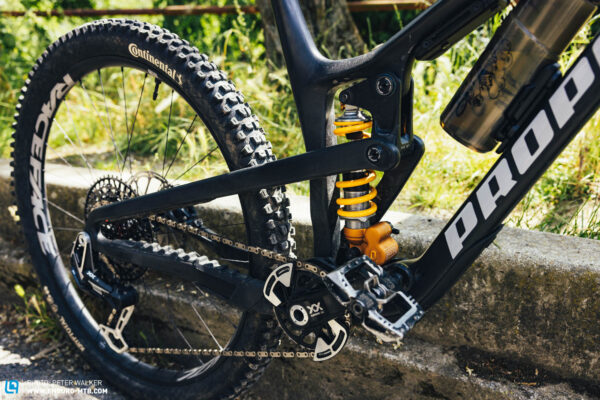
Our editorial team’s recommendations
For this test, we teamed up with Propain and headed to the European enduro mecca, Finale Ligure. We used the Pino Morto trail (aka Legnaia) as a test track, which provides a great variety of challenges with its rocky, technical terrain. Testing conditions were dry and dusty, making for a rather rough ride, which highlighted the otherwise subtle differences between the different setups. During this test, not only did our test crew try out all the possible configurations, but also found their favourites. In a nutshell, the highest price tag doesn’t always translate to the best trail performance. Interestingly, all of the test riders preferred the Tyee with the mullet wheel setup, because it integrates you deeper into the frame, inspiring more confidence on steep, gnarly trails.
Since they were there, the Propain crew used the opportunity to test the performance and potential of new components, chasing our test riders down the side of the mountain. The German manufacturer is constantly expanding their configurator, adding new components on a regular basis. So keep your eyes peeled and keep checking the configurator, because the new Tyee could soon be available with bling Öhlins suspension and tires from German rubber colossus Continental.
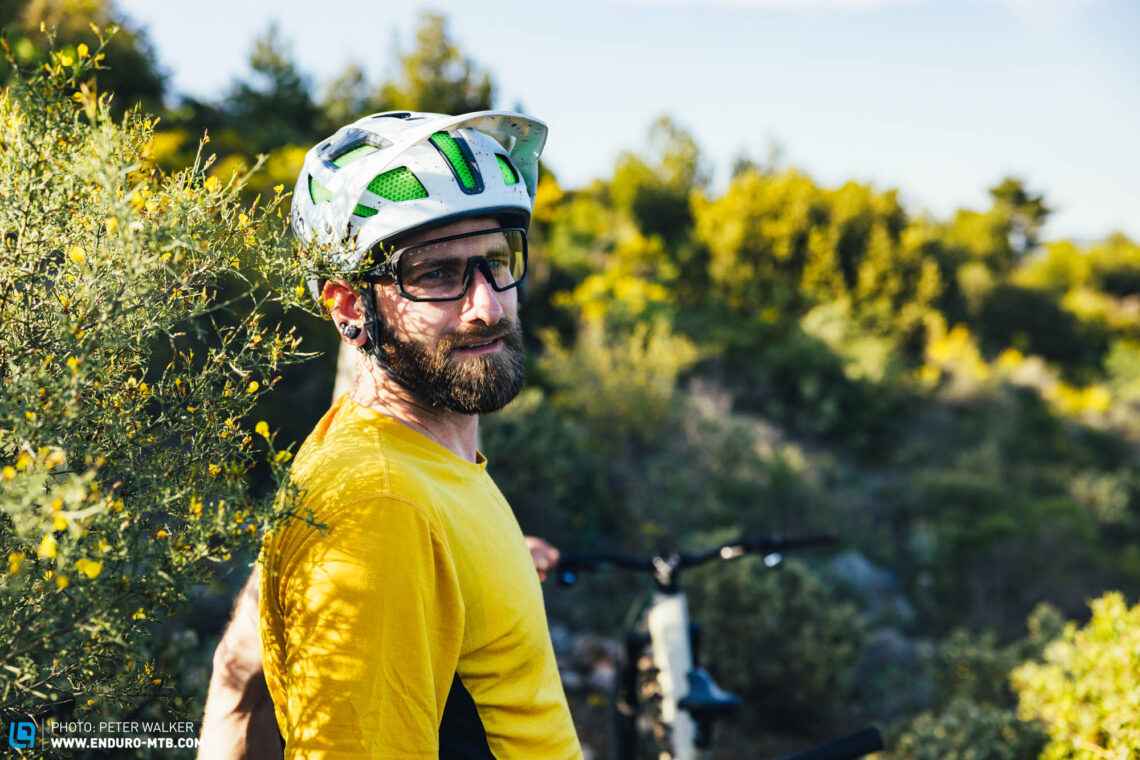
Juli’s Double Trouble
What’s better than one bike? Five bikes! Why settle for the Tyee when I can get a bike for every situation? When the going gets rough, I swing my leg over a downhill bike, while a downcountry rig is my weapon of choice for fast-paced endurance sessions. When the terrain isn’t as challenging, I wrap up in Lycra and jump on a gravel or road bike – but not before I shave my legs. If you own more than a couple of bikes, you know how expensive it can be to maintain all of them. That’s why I would opt for two robust, durable budget builds when configuring my own Tyee, using the Tyee AL as a basis for both. For my home trails, I’d pick the Formula suspension consisting of a Selva fork and MOD coil shock. For the tires, I would go for a lighter Schwalbe combo, which might be more puncture-prone, but rolls significantly faster. The Formula brakes look awesome and provide powerful, reliable deceleration.

Drivetrain: SRAM GX Eagle Dropper post: FOX Transfer
Brakes: Formula Cura 4 Wheelset: NEWMEN EVOLUTION SL A 30
Tires: Schwalbe MagicMary/MagicMary Price: € 4,344
For epic bike park sessions, I would swap the fork with a stiffer RockShox ZEB and run a Super Deluxe Coil Ultimate shock at the rear. With its 38 mm stanchions, the ZEB is significantly stiffer, ensuring a more composed front end and thus making it easier to stick to your line. With both builds, I’d choose business at the front and party at the back, running a mullet wheel setup with a smaller 27.5″ rear wheel.
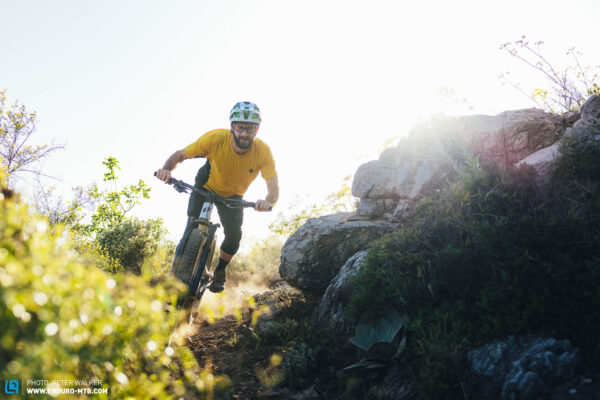
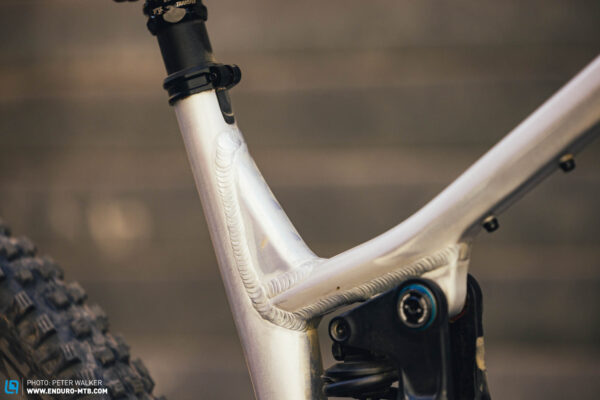

Drivetrain: SRAM GX Eagle Dropper post: FOX Transfer
Brakes: Formula Cura 4 Wheelset: NEWMEN EVOLUTION SL A 30
Tires: Schwalbe MagicMary/MagicMary Price: € 4,254
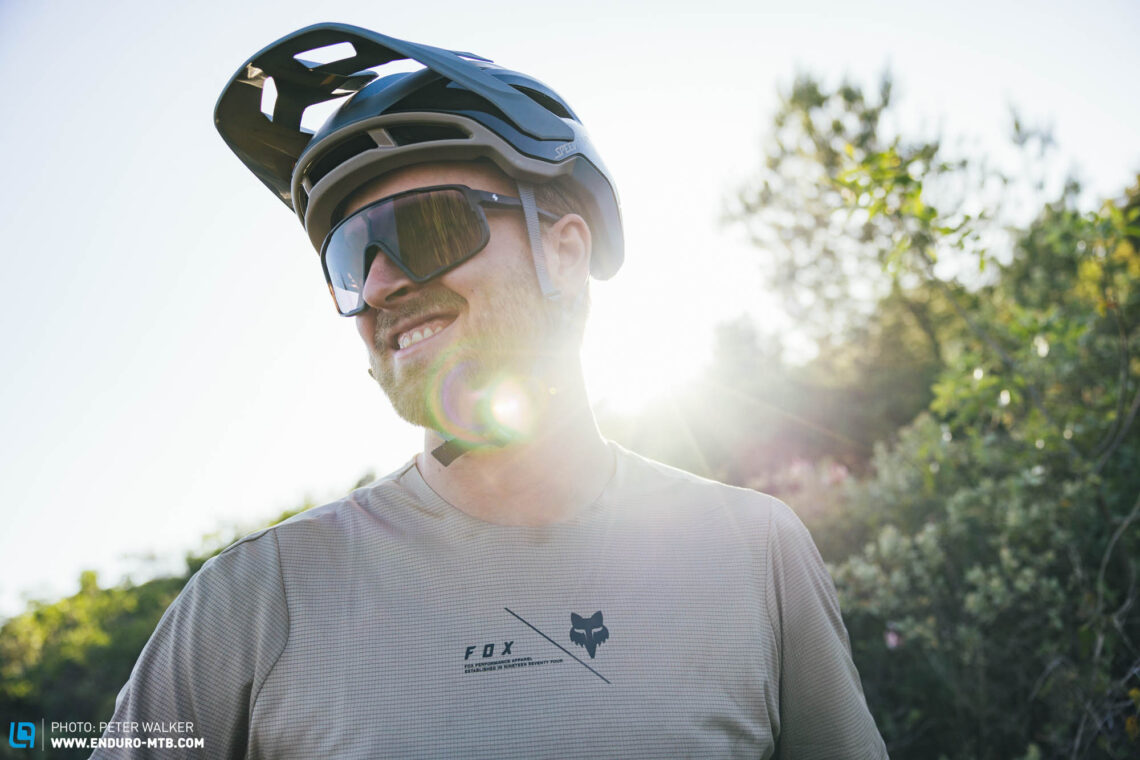
Nathan’s all-in-one
As I’m looking for a bike for all occasions, I’m convinced that it’s worth spending a bit more right away rather than upgrading afterwards – buy cheap, buy twice ;) In return for my money, I want a high level of versatility and low weight. As a mechanical engineer, I welcome geometry-altering wizardry and countless adjustability options. That’s why I use exclusively FOX Factory suspension on my bikes. Moreover, having spares and backup components allows me to be even more versatile, so I have an efficient 29″ carbon wheelset for moderate home trails as well as a second, more robust alloy wheelset with a MX configuration. For a slacker, more gravity-oriented setup, I like to leave the flip chip in the lower setting, even with the mullet wheel configuration! In addition, I can easily replace the wireless AXS dropper post with a rigid alloy seat post at the twist of a wrist, giving the fancy wireless dropper a well-deserved break when taking off to a rowdy bikepark session.
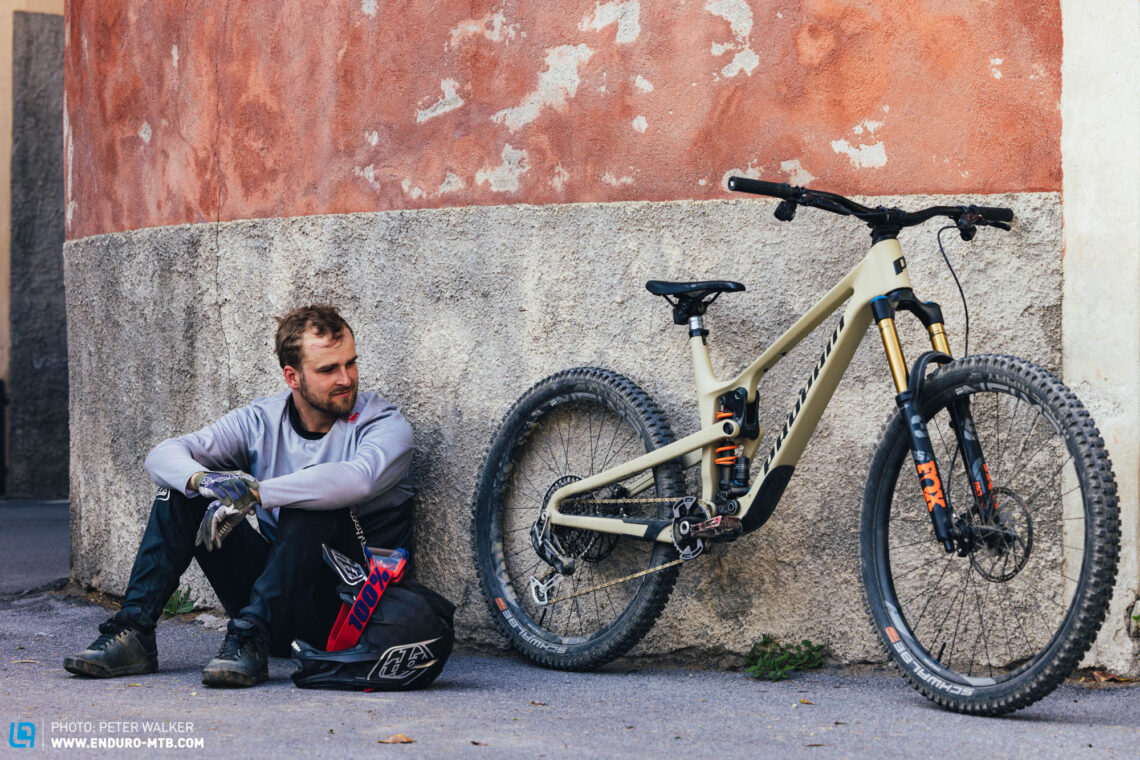
Drivetrain: SRAM Eagle XX-Transmission Dropper post: RockShox Reverb AXS
Brakes: SRAM CODE RSC Wheelset: NEWMEN ADVANCED SL A 30
Tires: Schwalbe MagicMarry / BigBetty Price: € 8,274
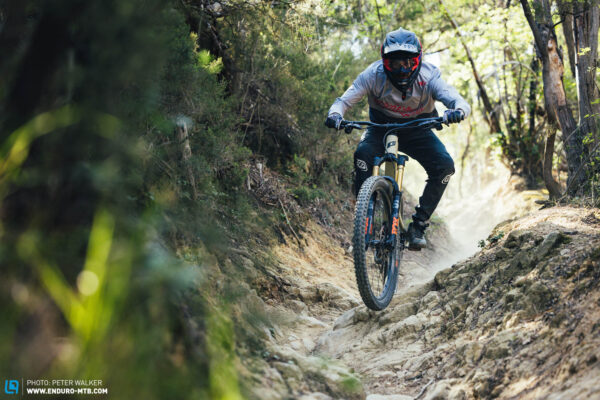
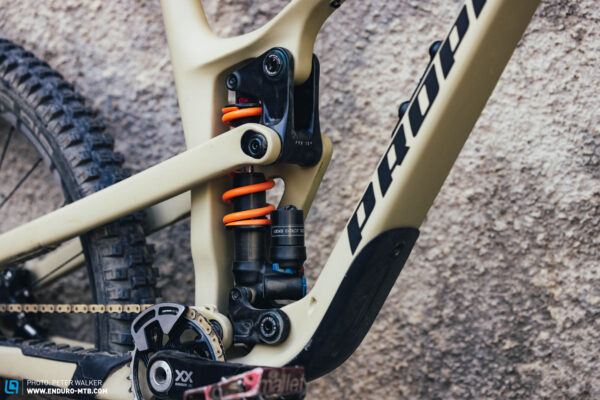
Our conclusions
With a huge variety of components to choose from, Propain’s online configurator is currently the most extensive one out there . Whether you want to build a featherlight trail hopper or a mean shredding machine, the configurator allows you to build your new Tyee according to your needs and preferences. You can choose from different wheel size options and contact points, and even though we would ditch some components in the configurator in favour of more tire and grip options, everyone should be able to build themselves a suitable bike.
